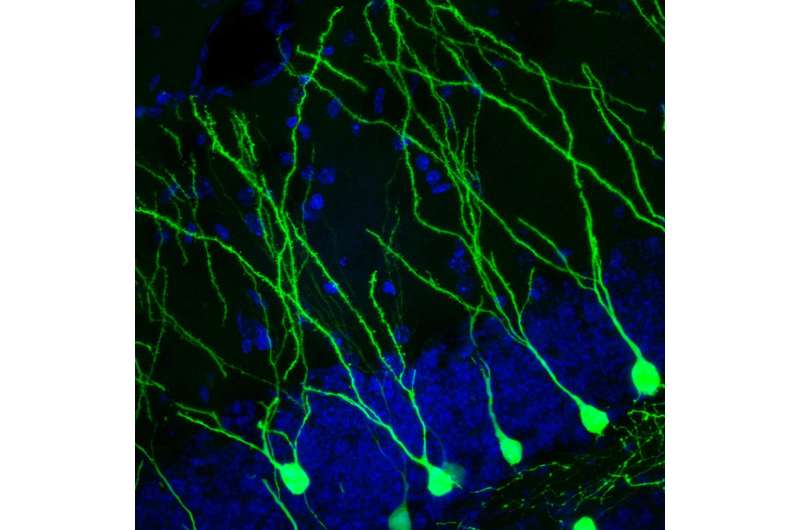Running releases protein associated with improved memory in mice

The reason why treadmill training can boost memory recall remains an active area of investigation. A couple of proteins have been shown to fuel exercise-induced neuron growth, but a June 23 study in Cell Metabolism presents a new candidate, cathepsin B—one that can be directly traced from the muscles to the brain in mice. Also, after a run, protein levels increased in blood in mice, monkeys, and humans.
"We wanted to cast a wide net. Rather than focus on a known factor, we did a screen for proteins that could be secreted by muscle tissue and transported to the brain, and among the most interesting candidates was cathepsin B," says senior author Henriette van Praag, a neuroscientist at the National Institute on Aging in the United States.
Three observations tipped off the researchers that cathepsin B—a somewhat understudied protein—could be of interest. After exposing muscle cells in a dish to compounds that mimic exercise, first author of the study, Hyo Youl Moon, observed that the presence of cathepsin B production noticeably increased in the conditioned media of the cultures. High levels of the protein were also found in the blood and muscle cells of mice that spent time daily for several weeks on their exercise wheels. Additionally, when cathepsin B was applied to brain cells, it spurred the production of molecules related to neurogenesis.
van Praag and her colleagues then compared memory recall in normal mice with that in mice lacking the ability to produce cathepsin B under both sedentary and running conditions. Over the course of a week, both sets of mice were given a daily swim test in the Morris water maze, in which a mouse is placed in a small pool and must learn to swim to a platform that is hidden just below the surface of the water. After doing this task for a few days, normal mice eventually learn where to find the platform. However, when both groups ran before their daily swim test, the normal mice were better able to recall the location of the platform, while the mice unable to make cathepsin B could not remember its location.
"Nobody has shown before cathepsin B's effect on spatial learning," says van Praag, who collaborated on the study with Emrah Duzel and colleagues at Otto-von-Guericke University and the German Center for Neurodegenerative Diseases. "We also have converging evidence from our study that cathepsin B is upregulated in blood by exercise for three species—mice, Rhesus monkeys, and humans. Moreover, in humans who exercise consistently for four months, better performance on complex recall tasks, such as drawing from memory, is correlated with increased cathepsin B levels."
This previously unrecognized function of cathepsin B may be controversial. The protein is known to be secreted by tumors and has been implicated in cell death and amyloid plaque formation in the brain. Other studies have found that cathepsin B is neuroprotective and can clear amyloid plaques. van Praag hypothesizes that different levels of the protein and different physiological conditions may yield different effects.
Going forward, the researchers want to better understand how cathepsin B is crossing the blood-brain barrier and how it is activating neuronal signalling, growth, and connections. There are also questions around whether the protein behaves the same in different species, and how production of cathepsin B changes with age.
"Overall, the message is that a consistently healthy lifestyle pays off," van Praag says. "People often ask us, how long do you have to exercise, how many hours? The study supports that the more substantial changes occur with the maintenance of a long-term exercise regimen."
More information: Cell Metabolism, Moon et al.: "Running-Induced Systemic Cathepsin B Secretion Is Associated with Memory Function," www.cell.com/cell-metabolism/f … 1550-4131(16)30247-9 , DOI: 10.1016/j.cmet.2016.05.025
















